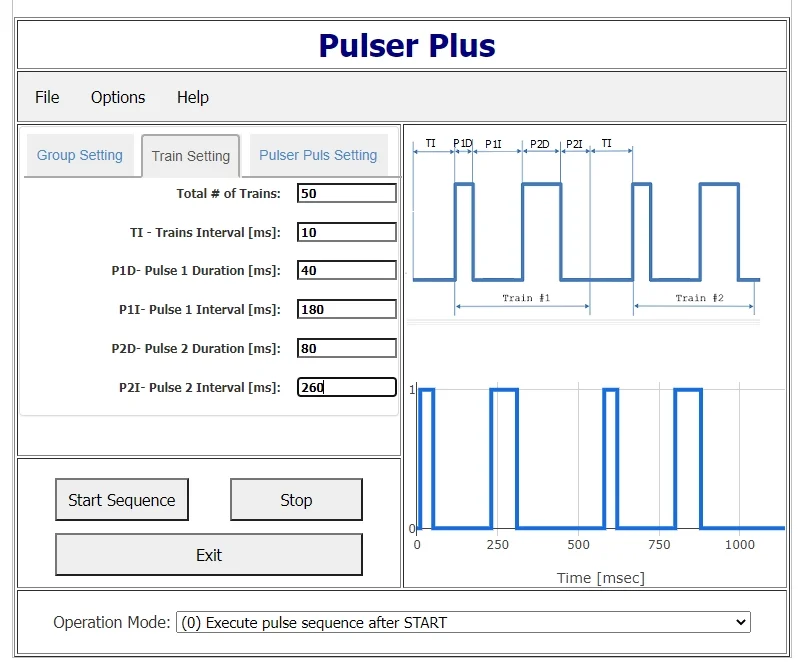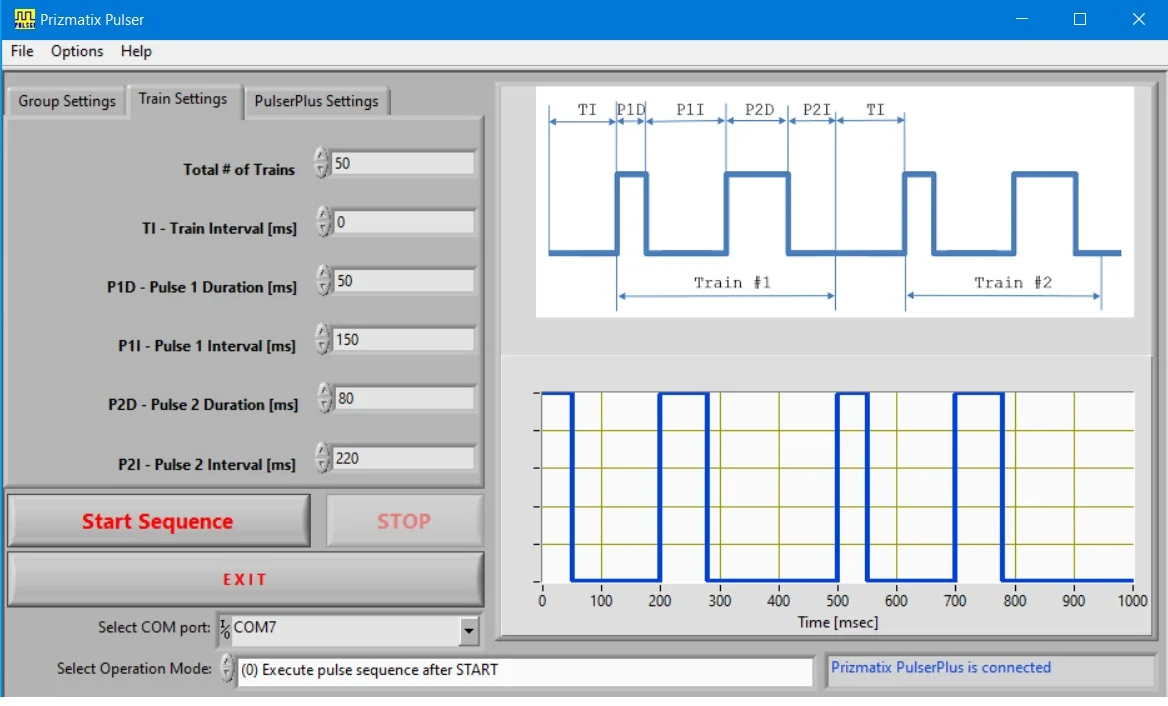Prizmatix offers a range of modules for optogenetics in-vitro experiments starting from simple plug-and-go starter kits (Optogenetics LEDs) to modular Ultra High Power (UHP) LEDs enabling you to create customized single or multi-wavelength set-ups to suit your application.
With speeds of better than millisecond-scale temporal precision, our LED light sources are exellent for dopsin activation and silencing.
From light source to cannula and everything between, Prizmatix can provide all the components necessary for your research - including advice and guidance.
For Optogenetics In-Vivo and relevant accessories click here
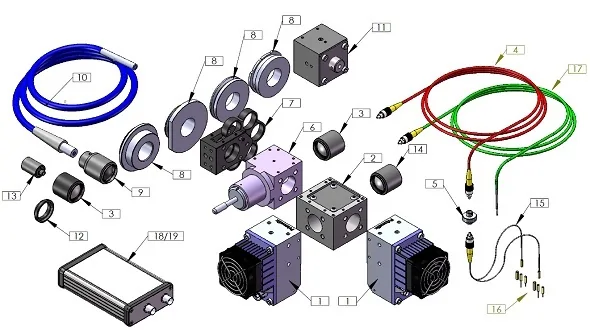
| [1] | Ultra High Power LED | [2] | Beam Combiner |
| [3] | Fiber Coupler Adaptor | [4] | Fiberoptics |
| [5] | Rotary Joint | [6] | Beam Switcher |
| [7] | Filter Wheel Manual / Motorized | [8] | Microscope Adaptors |
| [9] | Liquid Light Guide Adaptor | [10] | Liquid Light Guide |
| [11] | Liquid Light Guide XYZ Collimator | [12] | C-Mount Adaptor |
| [13] | Fiberoptic Collimator | [14] | Reference Photodiode |
| [15] | Single/Dual Fiber | [16] | Optogenetics Implantable Cannulae |
| [17] | In Vitro Optogenetics Fiber | [18] | Pulser / PulserPlus |
Ultra High Power LEDs(see [1] on drawing) |
|
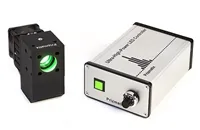
Click to enlarge |
Ultra High Power (UHP) Ultra High Power (UHP-T-EP) LEDs incorporate advanced electronics and optics designed for use in demanding Electrophysiology and Optogenetics applications. The UHP-T-EP (electrophysiology) features an ultra-high brightness single emitter LED (as opposed to LED array) optimized for both epifluorescence excitation and fiber coupled use. Compatible with Prizmatix’s Optiblock system, a single LED can be expanded to multi-wavelength or multi-output use with ease. Sophisticated electronics eliminates virtually all EM/RF noise and may be used inside or near EP rigs without shielding. The UHP-T LED driver includes TTL and Analog input as standard features. The TTL input is ideal for fast switching with a rise/fall time of microseconds, exceeding the required millisecond speed of most Optogenetics applications. Analog input allows for software control of intensity using a 0-5v signal. Available in Blue for Chr2 and CHETA, Green for Arch and ArchT, Red and Red-Amber for eNpHR3.0 and in UV/Violet for Uncaging. |
Beam Combiner
(see [2] on drawing)
|
The Beam Combiner can join two discrete UHP-LEDs into one output beam, which can then be coupled to a microscope or an optical fiber. For increased versatility, additional optical filters can be installed at the input or the output ports of the Beam Combiner. |
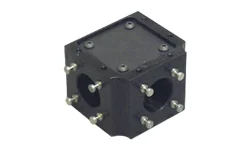
|
Fiber Coupler Adaptor
(see [3] on drawing)
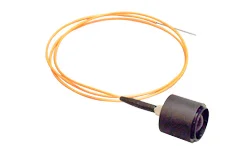
|
The UHP-LED can be easily changed from direct microscope coupling to fiber coupled LED configuration, using this Fiber Coupler Adapator |
Fiber Optics
(see [4] on drawing)
|
Prizmatix offers a wide range of standard and customized multi-mode silica / polymer fibers as well as ferrules for optogenetics research. A Y-shaped fiber bundle is especially useful, offering the option to activate two brain hemispheres simultaneously: a 1000μm or 1500μm fiber is coupled to the LED and connected to a rotary joint. From the joint’s other side emerge two thin fibers which can then be connected to two separate ferrules. The light from the LED is divided equally between the two hemispheres without any loss of power. |
Rotary Joint
(see [5] on drawing)
|
Prizmatix's Rotary Joint is specially designed for Optogenetics experiments with High NA detachable fibers equipped with FC connectors. Rotary Joint's extremely low friction and smooth swivel operation are demonstrated in this video - showing continuous rotation for over 30 seconds after a fingertip start-up. The torque required for free movement is very low thus reducing the Rotary Joint's behavioral effect on free moving animals, making it suitable for even the smallest rodents. Prizmatix Rotary Joint can be used with single or multiple output fibers simultaneously, enabling concurrent delivery of light to separate areas of the brain without loss of power or brightness. See more..
|
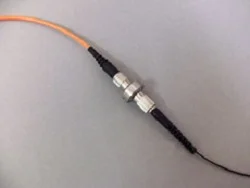
|
Beam Switcher
(see [6] on drawing)
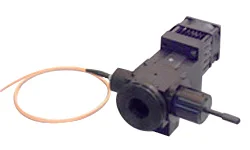
|
The Beam Switcher accessory allows for Prizmatix LEDs installed on a microscope to be used either as microscope epi-fluorescence illumination or illuminating a specimen via a fiberoptic probe.
|
Filter Wheel Manual / Motorized
(see [7] on drawing)
|
The UHP-T-LED can be equipped with a Filter Wheel at the beam output. This accessory is particularly useful for UHP-T-White LED light source. Prizmatix offers two types of filter wheels: |
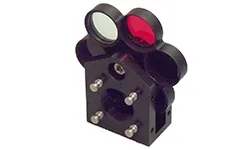
|
Microscope Adaptors
(see [8] on drawing)
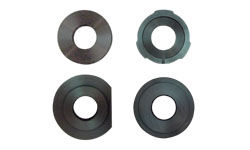
|
Use these adaptors to connect Prizmatix LED light sources to the most widely used microscopes. Adaptors for epi-fluorescence ports of Nikon, Zeiss, Olympus and Leica microscopes are available. |
Liquid Light Guide Adaptor
(see [9] on drawing)
|
The UHP-LEDs can be easily changed from direct microscope coupling to Liquid Light Gide (LLG) coupled using this Adaptor. This adaptor can be without difficulty assembled by the user on the UHP-LED output. |
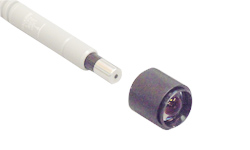
|
Liquid Light Guide
(see [10] on drawing)
The liquid light guide is a flexible tube with a liquid core that is used as an alternative to a light guide made of thin silica or glass fiber bundle and provides excellent light transmission. The liquid light guides are highly flexible and do not easily break. Prizmatix offers several types of Liquid Light Guides.
Liquid Light Guide XYZ Collimator
(see [11] on drawing)
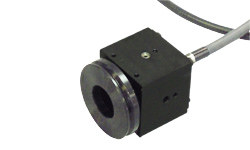
|
The Prizmatix LLG collimator is an XYZ adjustable collimator for Liquid Light Guide (LLG) with adaptor for the epi-illumination port of fluorescence microscopes. This collimator can be equipped with Nikon, Olympus, Zeiss or Leica adaptors. |
C-Mount adaptor
(see [12] on drawing)
|
A standard C-mount thread adaptor (1-32 UN 2A thread), usually used to connect to trinocular microscopes. |
Fiberoptic Collimator
(see [13] on drawing)
|
Collimators are required to generate a parallel beam of light out of the naturally diverging light emission from an optical fiber. Prizmatix collimator is designed to collimate High NA fibers (up to 0.53), such as Hard Polymer Clad fibers and Polymer Optical Fibers (POFs). |
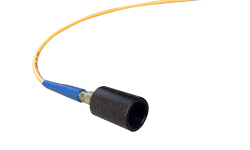
|
Reference Photodiode
(see [14] on drawing)
Prizmatix reference photodiode is useful in order to monitor LED source power over time in experiments required exceptional stability over long time period.
The photodiode signal can be used to normalize measurements; alternatively the photodiode signal can serve as a feedback signal to stabilize the LED power.
See more..
Single / Dual Optogenetics Fiber
(see [15] on drawing).
Prizmatix provides diverse fiber optics solutions for optogenetics in-vivo. Made of silica or polymer, these high NA fibers can be constructed to fit any research set-up with various combinations of connectors, ferrules, core diameters and lengths.
Typical Optogenetics in-vivo fiber optics setup will include fiber patch cord from Optogenetics-LED to Rotary Joint (P/N: Optogenetics-Fiber-1000), fiber to connect the Rotary-Joint to cannula (P/N: Optogenetics-Fiber-500) or dual fiber for bilateral activation (P/N: Optogenetics-Fiber-Dual-500). The later can be optimized for mice (1.25mm ferrule) or to rat (2.5mm ferrule). In some setups this fiber can be produced as Armored fiber with very light and flexible metal sheath.
See more ...
|
|
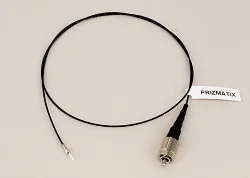
Optogenetics Fiber |
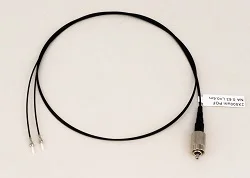
Optogenetics Dual Fiber |
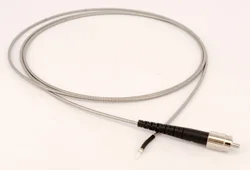
Armored Optogenetics Fiber |
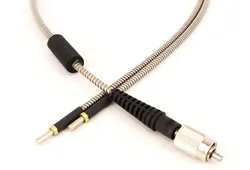
Armored Optogenetics Fiber Dual |
Optogenetics Implantable Cannulae
(see [16] on drawing)
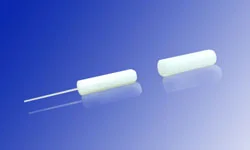
Prizmatix Implantable Fiberoptic Cannulae / Ferrules allow direct light stimulation of certain deep brain regions in living animals. Each Cannula consists of a Zirconia ferrule accommodating a high NA Silica optical fiber, protruding from the Zirconia ferrule at a desired length. See more...
Pulser / PulserPlus(see [5] on drawing) |
||||
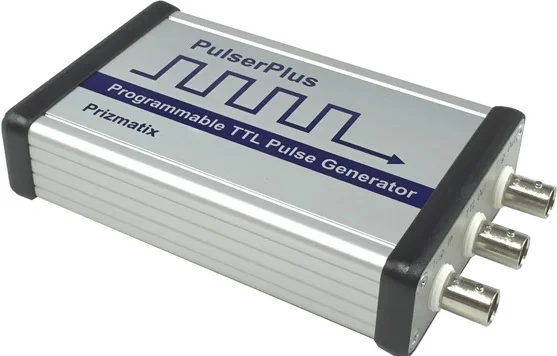
See the Pulser in action: |
||||
|
The Pulser device is TTL-Pulse-Generator for Optogenetics experiments. Pulser provides an easy and inexpensive way to create trains of TTL pulses for Optogenetics activation directly from your computer via USB. It can work with Prizmatix Optogenetics-LEDs, Lasers or Shutters. TTL-Out connector used for TTL pulses with sophisticated sequences (single or bi-phasic pulses as single pulse train or multiple groups of trains are possible). Trigger-In connector is provided for synchronization of Optogenetics with other experiment events ( e.g. events created by video tracking software). Five different Trigger Operation Modes are provided. Trigger-Out connector enables further activation of additional devices after pulse train was completed ( PulserPlus only) |
||||
|
The Pulser software enables the simple visual design of various TTL pulse trains. The software is available as a stand-alone Windows application, as well as web-based application running on Google’s Chrome browser, enabling the use of the Pulser on Mac and Windows platforms. Pulser includes all necessary hardware, software and cables. See more ... |
||||
|
| ||||
|
||||
© |


